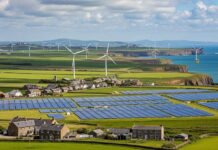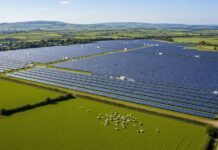Poverty-stricken Honduras is the latest home to solar energy projects in Central and South America that are driven by U.S. service providers but fitted out with Chinese-made equipment. Colorado’s Onyx Service and Solutions Inc. said it will install its newest solar energy project in Latin America, made up of Chinese-manufactured solar panels and associated equipment, at West Bay Lodge Project in Roatan, Honduras. Onyx Management is also using Honduran personnel for the installation which fulfills a need for electricity supply expansion in the Central American country.
Honduras was severely affected by a coup in 2009 that triggered an international diplomatic, political and economic isolation of the country. Recovery has been slow despite assistance from the European Union and the United States. The West Bay Lodge installation follows a deal reached in October to power the resort, part of the government’s plan to regenerate the economy with tourism. The West Bay Beach is the most popular tourist destination on the Island of Roatan, and an international tourist destination.
Onyx said in deciding on the project it took a different course than most other solar companies, choosing to forgo competition against coal-fired electricity producers or depending on government subsidies to make a profit. After a detailed research of the worldwide markets for power, Onyx said, it focused on sectors that relied on costly diesel generated electricity such as that in Roatan at present but offered opportunity for greater profit margins. Onyx is developing multiple solar power projects in Honduras, one as large as 22 megawatts, and Panama. The company is developing solar power distribution in Colombia and Peru.
Solar power generation and distribution is set to grow in Latin America and has enabled U.S. renewable energy companies to position in the area. Last month scientists at Notre Dame University in Indiana announced they devised an inexpensive “solar paint” that can produce energy.
The paint, dubbed Sun-Believable, may someday be applied to homes to generate electricity from light to power appliances and equipment inside. The paint uses semiconducting nanoparticles to produce energy from sunlight.
“We want to do something transformative, to move beyond current silicon-based solar technology,” chemistry Professor Prashant Kamat of the university’s Center for Nano Science and Technology said.
“By incorporating power-producing nanoparticles, called quantum dots, into a spreadable compound, we’ve made a one-coat solar paint that can be applied to any conductive surface without special equipment.”
When the paint is brushed onto a transparent conducting material and exposed to light it creates electricity, the researchers said.
“The best light-to-energy conversion efficiency we’ve reached so far is 1 percent, which is well behind the usual 10 to 15 percent efficiency of commercial silicon solar cells,” Kamat said.
“But this paint can be made cheaply and in large quantities. If we can improve the efficiency somewhat, we may be able to make a real difference in meeting energy needs in the future.”
The International Energy Agency said a more intelligent use of solar energy could help meet a growing percentage of the world’s energy needs. Enough sunlight reaches the Earth in 90 minutes to meet the world’s energy needs for a year if harnessed appropriately, the IEA said in a report from its headquarters in Paris.
“While solar energy resources are abundant, their use currently represents only a tiny fraction of the world’s current energy mix,” said report author Cedric Philibert.
“But this is changing rapidly and is being driven by action to improve energy diversification and security, mitigate climate change and provide energy access.”
The IEA warns that concerns over cost have led some governments to make hasty policy decisions that could force a reversal of any gains in the use of solar energy. The agency calls for “comprehensive and fine-tuned policies” that back a growing portfolio of solar technology. Given the right conditions, the IEA said, solar power could become a competitive energy source within 20 years.
“Integrating all solar technologies in a system-oriented policy approach will unlock the potential of solar energy within the broader set of low-carbon technologies needed for a future sustainable and more secure global energy mix,” Paolo Frankl, head of the IEA’s Renewable Energy Division, said in a statement.

































